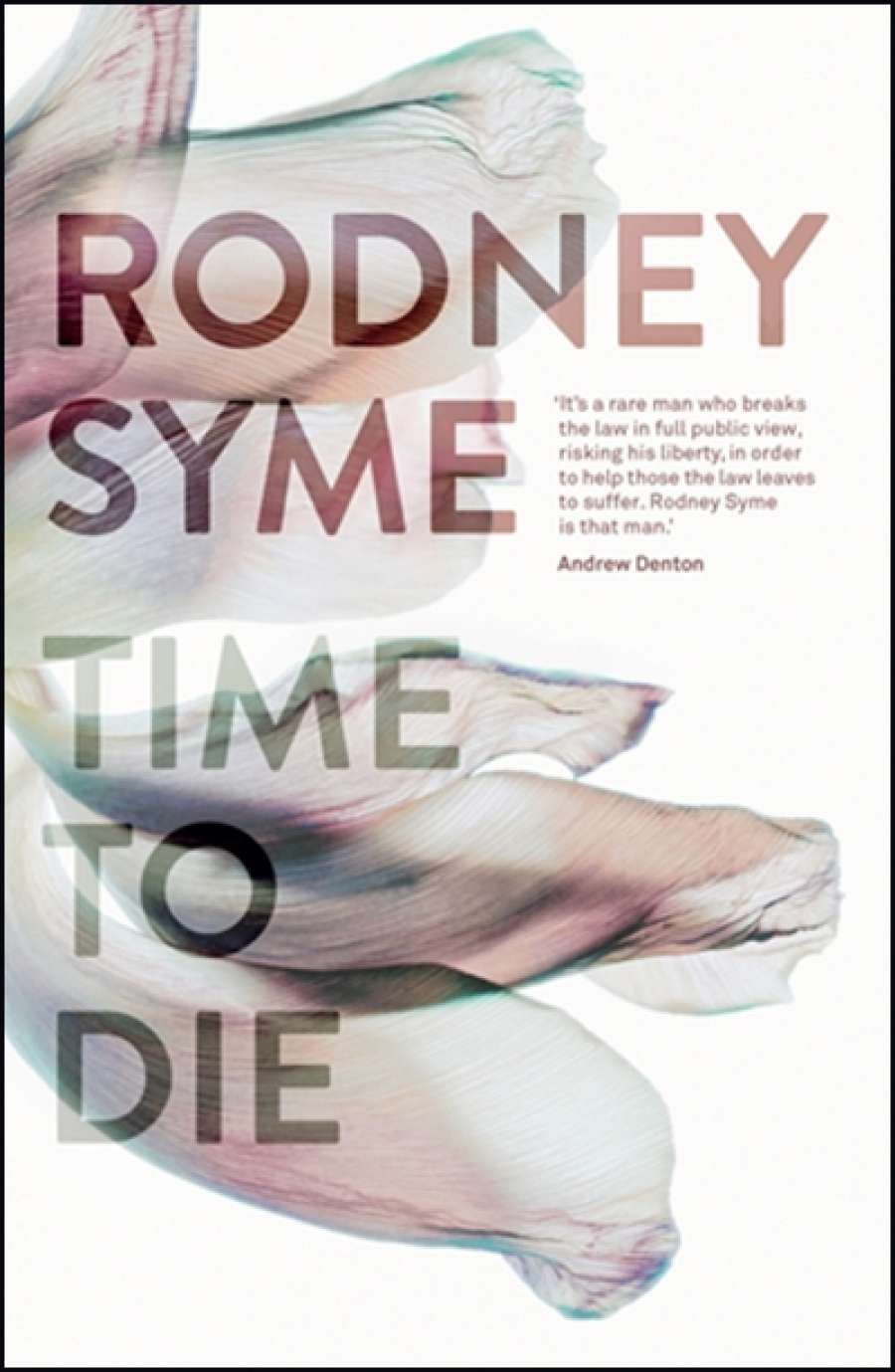
- Free Article: No
- Contents Category: Society
- Custom Article Title: Deborah Zion reviews 'Time to Die' by Rodney Syme
- Book 1 Title: Time to Die
- Book 1 Biblio: Melbourne University Publishing $32.99 pb, 204 pp, 9780522870930
Why are changes needed? For many years, the final stages of life were often transient. Just as life was frequently too short, dying was often sudden. Syme points out the demographic issues that support an imperative for change. An ageing population and increased access to medical intervention bring to the fore renewed questions about what constitutes a good death. In particular, many of the conditions such as pneumonia, once called ‘the old person’s friend’, are now treated aggressively, thus undermining a relatively quick and peaceful end.
Whatever one’s views of euthanasia or assisted suicide may be, Syme is by any standards a man of integrity and courage. Now eighty years old and a retired urologist, he became a fellow of the Royal College of Surgeons in 1964. As such, he has witnessed not just a shift in demography, but also myriad examples of pain and distress. This has motivated him to challenge the law, and in so doing he has frequently risked deregistration and imprisonment by openly assisting the ending of life for those enduring egregious suffering. His advocacy for the rights and dignity of the dying on a recent episode of Australian Story resulted in an investigation by the Medical Board of Victoria into the story of Bernard Erica, an elderly man who was dying horribly of terminal cancer.
 Rodney SymeMuch of the debate concerning assisted dying hinges on philosophical arguments, particularly patient autonomy, the so-called ‘slippery slope’ line of reasoning, through which allowing assistance for those whose decision making capacities are intact will lead to wholesale killing of those whose competence is impaired. Significantly, most assistance in dying in Australia, when it does occur, depends on ‘the doctrine of double effect’. That is, pain relief is legal even if death is a likely outcome, as long as the motivation for treatment is palliation.
Rodney SymeMuch of the debate concerning assisted dying hinges on philosophical arguments, particularly patient autonomy, the so-called ‘slippery slope’ line of reasoning, through which allowing assistance for those whose decision making capacities are intact will lead to wholesale killing of those whose competence is impaired. Significantly, most assistance in dying in Australia, when it does occur, depends on ‘the doctrine of double effect’. That is, pain relief is legal even if death is a likely outcome, as long as the motivation for treatment is palliation.
In challenging both the legal arguments and the status quo, Syme does something that is much needed when discussing medical ethics. He brings the dry bones of law and policy to life by telling a series of stories that connect us with the human anguish that goes with prolonged illness. He shows us how advanced incurable illness – often the type for which palliative care, and therefore death by morphine, is not an option – takes over not only the body but the social and emotional spheres of life. Greta’s story, one of many in Time to Die is emblematic. A previously extroverted woman, Greta experienced bowel problems that led to a major operation and the need for a colostomy bag. Incontinent and in great pain, she is no longer able to socialise. She has been advised that there is no possibility of any amelioration in her condition; indeed, she has endured this diminished form of living for fifteen years. While Greta is not dying, her life resembles a living death. When telling her story, Syme asks an important question: should people have to live with unbearable physical and psychological pain, or is it reasonable that competent persons such as Greta can seek assistance for a peaceful death?’ Syme urges us to consider this question, and to act up on it.
It is undeniable that changing the legislation will bring about many complex problems, not least when a patient is no longer competent and family members are left to carry out previously expressed directives. Syme believes that much could be achieved if we started talking about dying to physicians and to our loved ones. He reminds us that at the cornerstone of all good health-care practice is a consideration of each person’s history, and that ‘good communication is at the heart of a good death’.


Comments powered by CComment